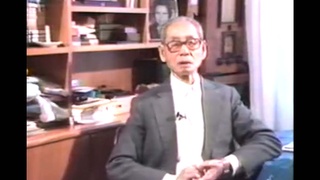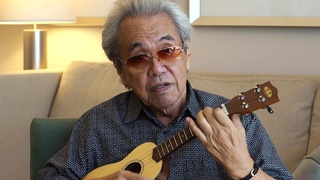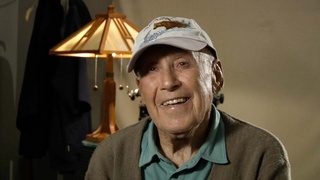Interviews
Enjoying undokai and sports in Crystal City
While we were there, there were all kinds of events. One that I really enjoyed was, in Japanese, they call it undokai, where all the classes, all the students participate. Third grade would compete with another third grade, with another class, and so on. And running, especially, and if you win, they would give you a pamphlet, they would give you a paper, they would give you a pencil, eraser, that was our prize. But that was very enjoyable, just competing with another.
Date: September 20, 2019
Location: California, US
Interviewer: Tom Ikeda and Yoko Nishimura
Contributed by: Watase Media Arts Center, Japanese American National Museum and Denshō: The Japanese American Legacy Project.
Explore More Videos

Makegumi - Movement to regognize the defeat of Japan (Japanese)
A central figure for the “Makegumi” (defeatists)

Parent's immigration to Peru
(b. 1942) Japanese Peruvian incarcerated in Crystal City

Strictly American, but sympathize with Japan
(1919-2020) Member of the 1800th Engineering Battalion. Promoted Japan-U.S. trade while working for Honda's export division.

Father's Service in WWII
(b. 1930) Half Japanese and grew up in both Japan and the United States.

Moving to Upland Post-Camp
(b. 1930) Half Japanese and grew up in both Japan and the United States.

Kindergarten in Davao, Philippines
(b. 1938) Philipines-born hikiagesha who later migrated to the United States.

Family was shipped back to Japan after the war
(b. 1938) Philipines-born hikiagesha who later migrated to the United States.


Coming to California
(1916 - 2013) Member of the U.S. Military Intelligence Service

Life in the Philippines
(b. 1938) Philipines-born hikiagesha who later migrated to the United States.

Learning Japanese with the MIS
(1916 - 2013) Member of the U.S. Military Intelligence Service

Camouflage Net Weaving in Manzanar
Japanese American animator for Walt Disney and Hanna Barbera (1925-2007)

Miscommunications
(1916 - 2013) Member of the U.S. Military Intelligence Service

Writing Letters
(1916 - 2013) Member of the U.S. Military Intelligence Service

Returning to the Philippines
(b. 1938) Philipines-born hikiagesha who later migrated to the United States.
